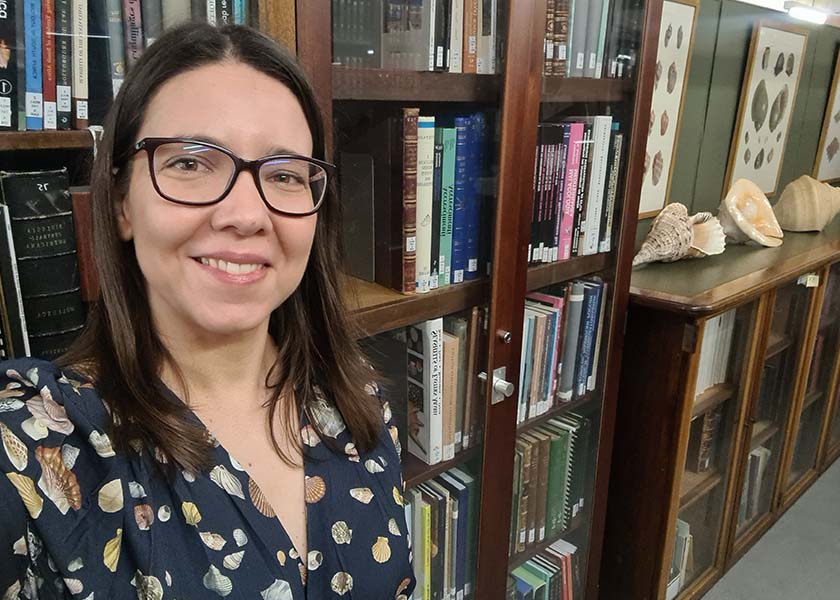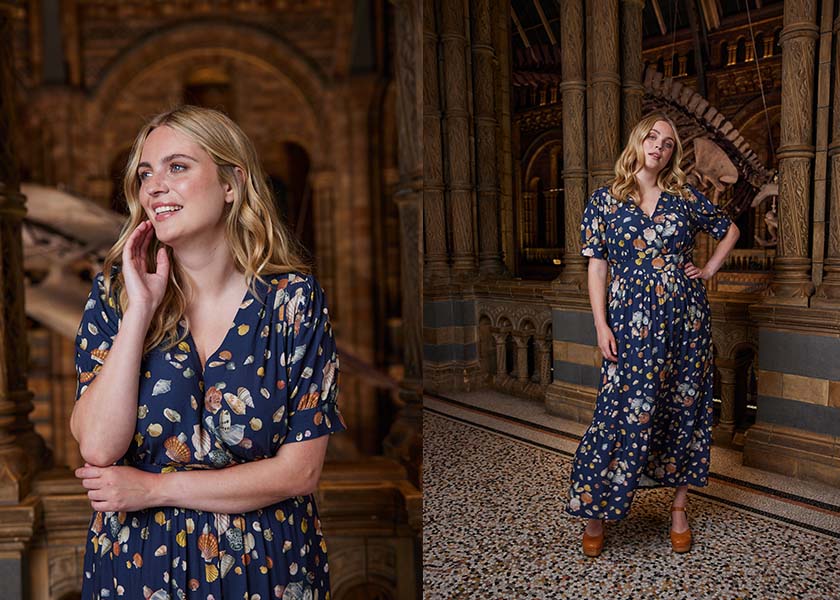To celebrate the second Natural History Museum X Joanie range, we're talking to some of the women who curate and research the Museum's incredible collections!
Andreia Salvador is the Senior Curator of Marine Mollusca at the Museum, and we sat down with her to learn more about what got her into science and her career so far.
Hi Andreia! Can you tell us a bit about your specific area of study or interest?
I am a Senior Curator of marine molluscs. I am responsible for a collection of three million marine gastropods (sea snails) that I organise, catalogue and provide access to. I am also responsible for the historical collections of the Mollusca section (including the Hans Sloane and Joseph Banks shell collections), and for the small collections of pearls, molluscs eggs and ethnographic objects made with shells like cameos.
My expertise is in the history of collections, collectors, voyages and expeditions related to the specimens that we have at the Natural History Museum.
What has your career looked like so far, and what drew you to the Natural History Museum?
I started my museum career in Portugal, but when the contract ended, I struggled to find a similar job there. I really wanted to be a curator, so I decided to move to London to volunteer at the Natural History Museum, which is, for me, the best natural history museum in the world. I didn’t think I would stay for longer than three months, but I fell in love with the collections, the building and the amazing team of curators that were always willing to share their expertise. This was almost 20 years ago! Initially I worked with different collections, until I joined the Mollusca team in 2011.
What inspired you to get into science - is it something you’ve always been interested in, or was there something or someone specifically that influenced your decision to pursue a career in STEM?
I always wanted to be a marine biologist, so I followed the science path without hesitation. My first dream was to research whales and dolphins. Eventually I swapped my original goal for the study of marine molluscs, but it was only while organising a shell exhibition at university that I learned about the job of a curator. I was amazed that people worked in museums cataloguing, identifying and organising collections. That was exactly what I used to do with my own shell collection. I was hooked.
What would you say are the major challenges as a woman working in a scientific field?
I cannot say that I ever experienced any issues relating to that. I always felt that I was given an equal opportunity in my applications for jobs or through progression at the Natural History Museum. For sure, academia can be a challenging and often difficult world to work in, but I have been very fortunate to have a fantastic supportive network of colleagues around me.
What advice would you give to aspiring young scientists - especially young girls - who might feel daunted by the prospect of scientific study?
Do it! Do not give up, have a plan, and do not doubt yourself. Try different things and learn as much as you can, read books and magazines, watch documentaries, and visit museums. And if you can, become a volunteer. If a stubborn Portuguese girl followed the unimaginable dream to become a curator at a world-renowned museum, why shouldn't you?
What’s the most exciting thing about your job?
Every day is different. I can spend the day answering an inquiry, hosting an international visitor, identifying shells, topping up jars in our fluid preserved collection, or giving a tour to our members. You can find me on my computer cataloguing the collection, in the library researching a particular collector, or in our historical room organising shells collected more than 270 years ago.
I adore what I do, and although 20 years have passed since a shy girl rang the museum asking for a job, I am still in awe of the incredible collection and the amazing opportunity to be its custodian.
If you want to know more about the collection of molluscs at the Natural History Museum and the work that I do, then check out my book, Interesting Shells.










